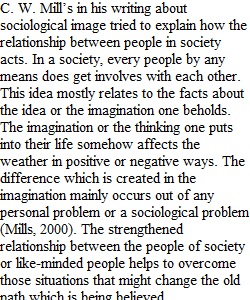


Q **This assignment utilizes Turnitin. When you submit this assignment to the assignment drop box, it will automatically be submitted to Turnitin. You will receive an Originality Score along with an Originality Report that should be carefully reviewed. If revisions need to be made to your assignment, you will be able to submit your assignment up to three (3) times before the due date, and you will quickly receive updated Originally feedback. It is important to plan ahead so that you have enough time to review your originality feedback and make any revisions to your assignment before the final due date. Please see instructions for using Turnitin in the Course Welcome module under Useful Resources. NOTE: In the event you must submit your assignment AFTER the due date (with approval and consent of instructor), please note the following: • Turnitin will only provide ONE attempt for Originality Feedback for late submissions. • Please refer Late Assignment Policy in the Syllabus for questions related to a request to submit a late assignment. The purpose of this essay is to apply C. W. Mills’s Sociological Imagination concept to explain a personal situation. The essay will demonstrate the student’s ability to use sociological concepts & theories learned in the course, to describe a personal situation. The topic is left to the student’s discretion. The Essay paper should have the following 5 content areas: 1. Introduction: In this first content area, write a paragraph introducing C. W. Mills’s concept of sociological imagination, and give a general overview of how you will be applying it to the personal situation that you will discuss in your paper. 2. Personal Explanation: In this second content area, describe your personal situation/topic. Based on whether the situation is a current one or a past one, describe how you dealt or are dealing with it. You can also pick a situation from a person’s life who is closely related to you or whose experience affected you. You should know the person well enough to write the essay. Describe what caused the problem, who were involved, what were others’ and your roles in the situation, and if a resolution was reached. This section is all about your account of your situation and should be no longer than four paragraphs (3/4 – 1 page). 3. Sociological Imagination: In this third content area, analyze your personal situation by applying sociological imagination, i.e., examine how society and social forces affected your situation. This section should be the most substantial portion of your essay. You should use terms and concepts from at least 3 different chapters from the textbook, and one sociological theory. 4. Data/Stats: Utilize at least 2 statistics or research studies from the textbook or outside sources such as the Galen College online library. The references should be scholarly and should be relevant to your situation (E.g., Inclusion of divorce rates in the US if the topic is on Divorce; inclusion of poverty rates, crime and victimization rates, or suicide rates if the topic is either on Poverty or Crime). Citing at least one outside source is required. 5. Conclusion: Write a wrap-up conclusion summarizing the major finding/themes in your paper. This should be no more than a paragraph. Your essay should be 4-6 pages in length (excluding the title page and the references page) and should be double-spaced. You will lose points if your essay is shorter than 4 full pages of content. The font should be 12-point Calibri or Times New Roman. Use APA format for your entire essay, including for references and in-text citations and edit your work carefully for spelling and grammar. Your essay should be 4-6 pages in length (excluding the title page and the references page). It should be double-spaced on standard-sized paper (8.5” x 11”) with a 1” margin on all sides. The font should be 12-point Times New Roman or Calibri. Use APA formatting throughout your essay and cite any sources you use. For help with APA formatting and style, refer to the Purdue Owl website and the APA Style Central tool featured in Canvas.
View Related Questions